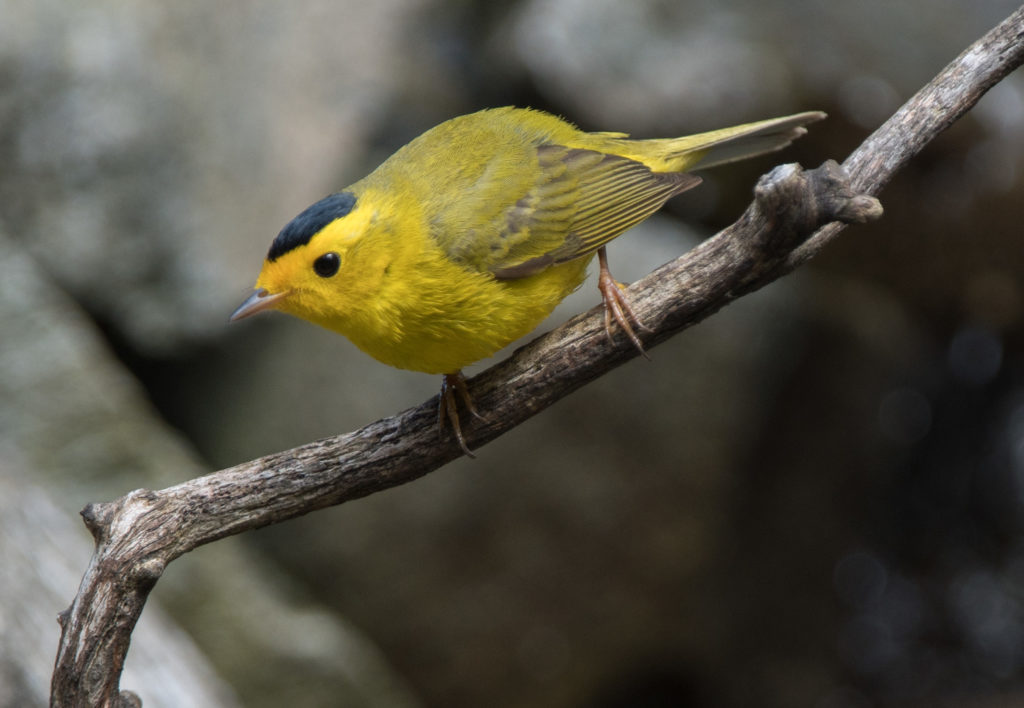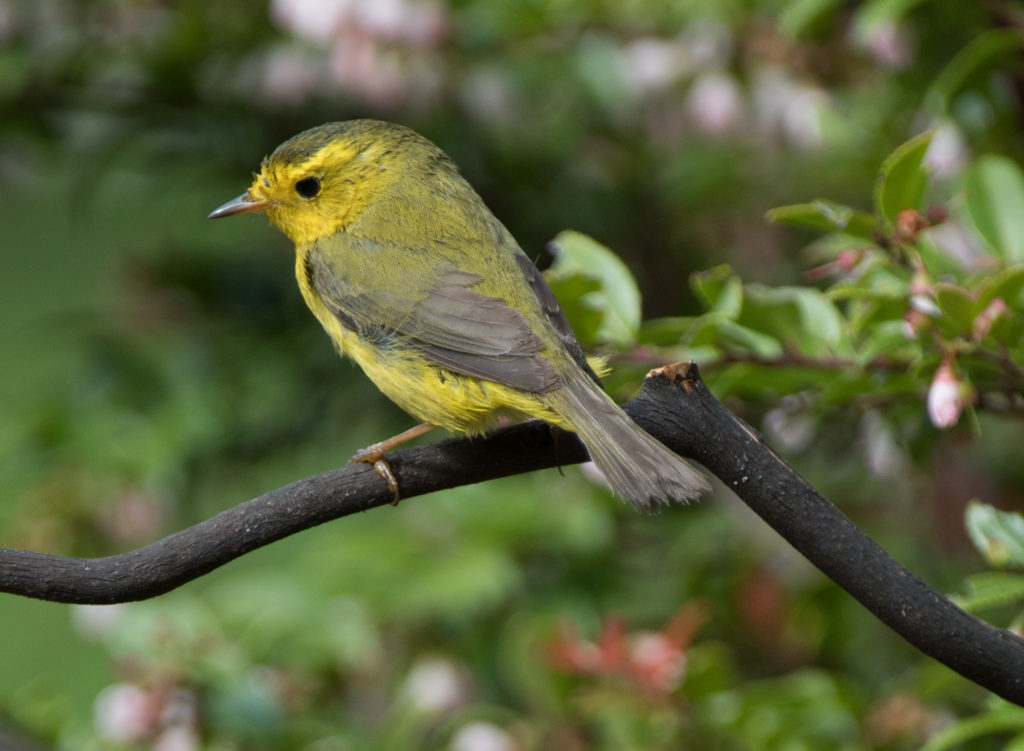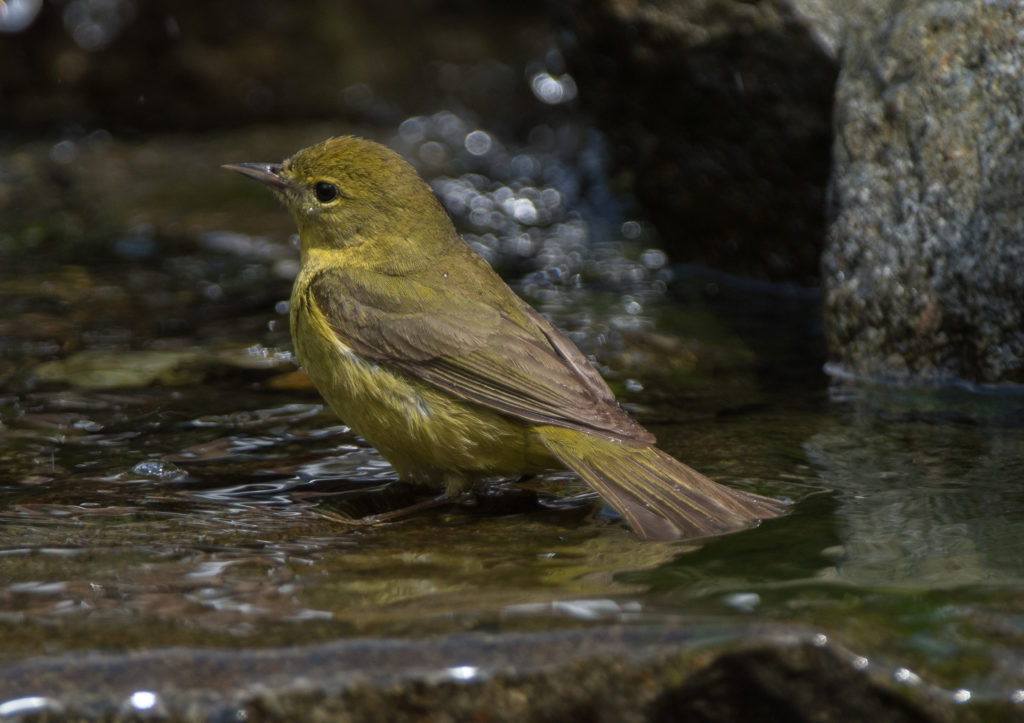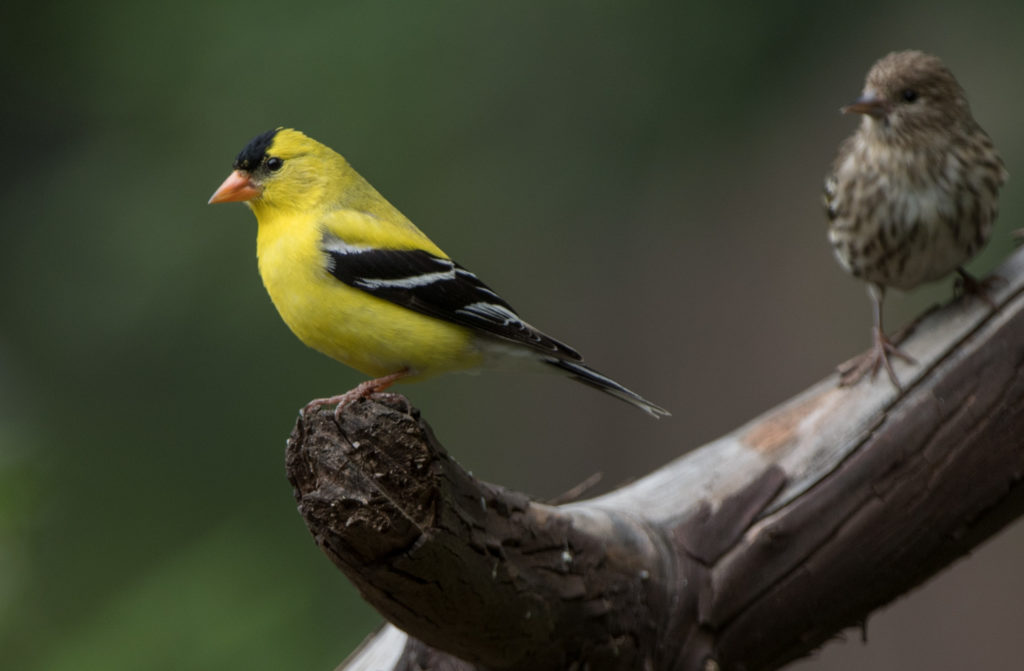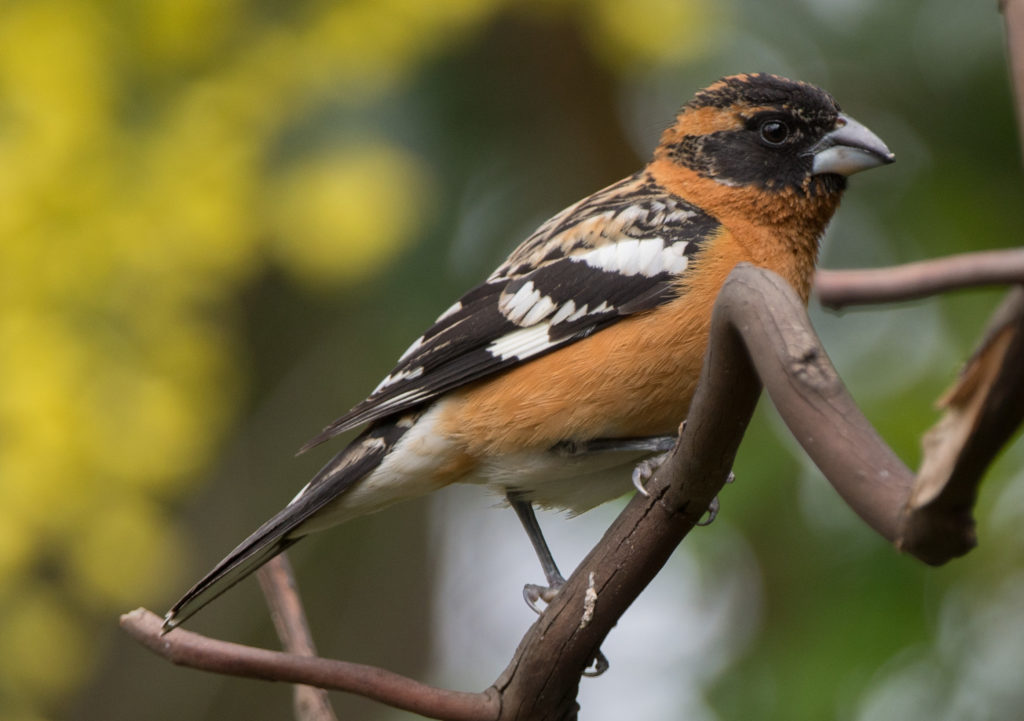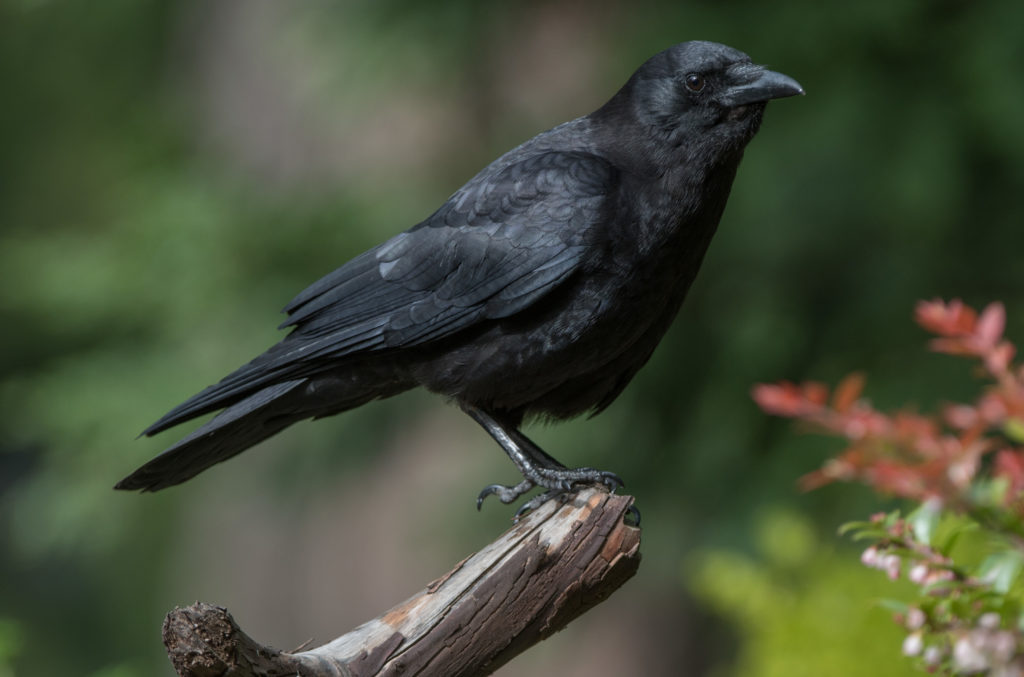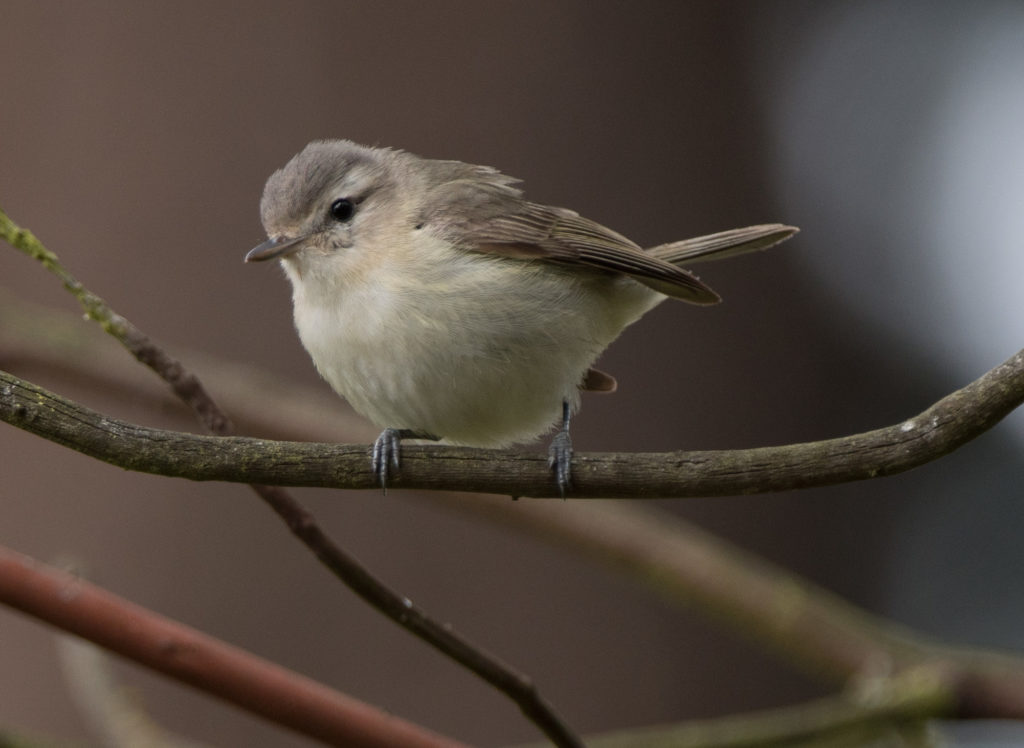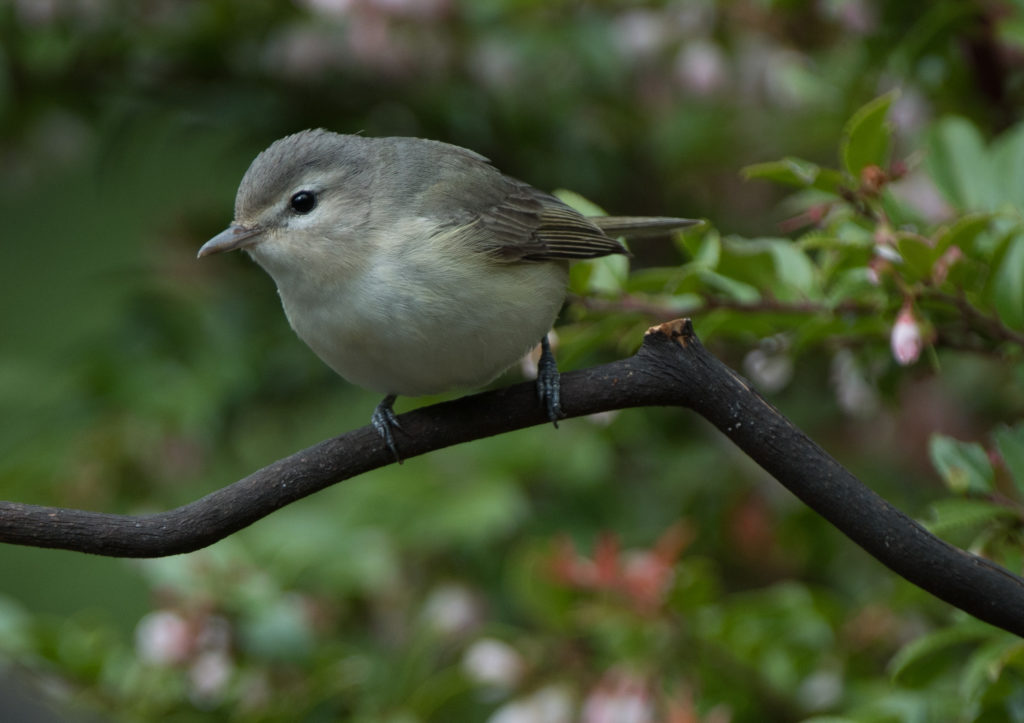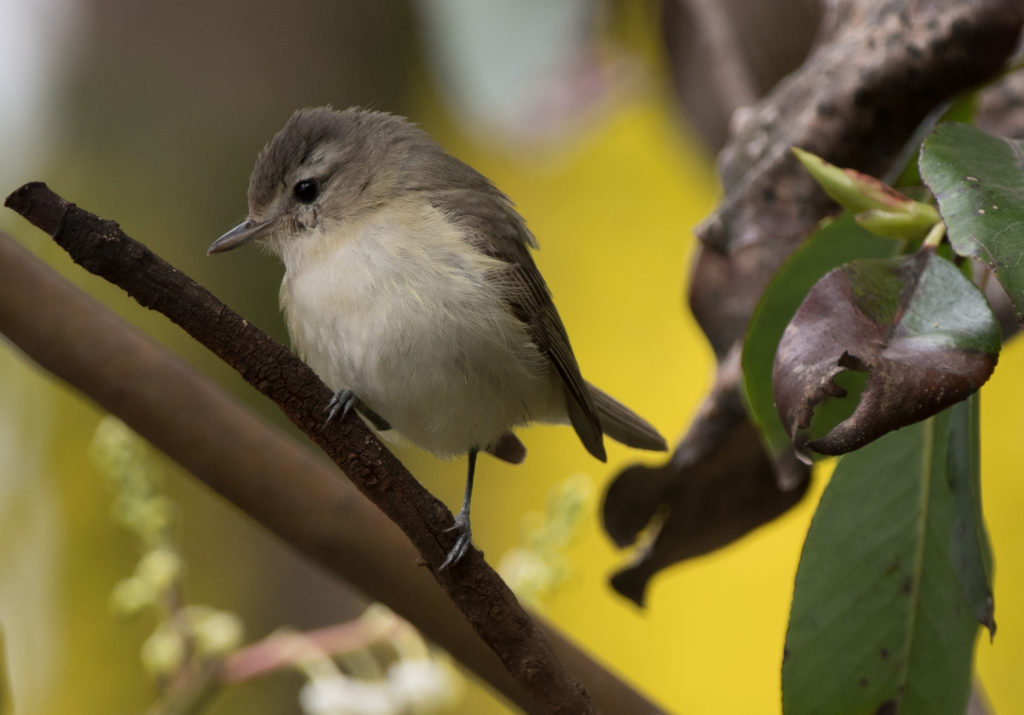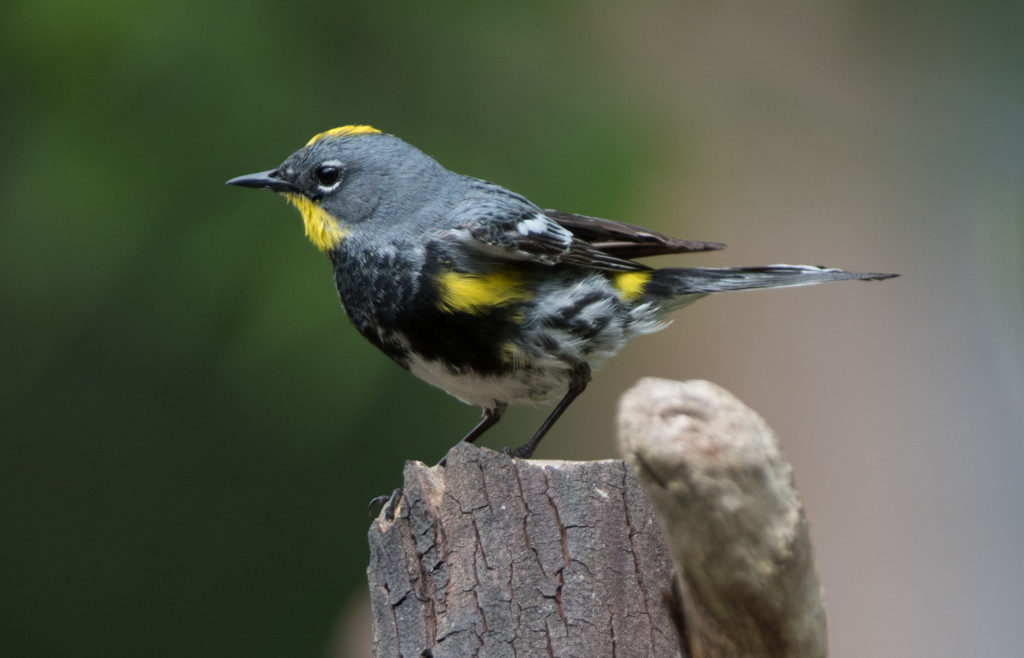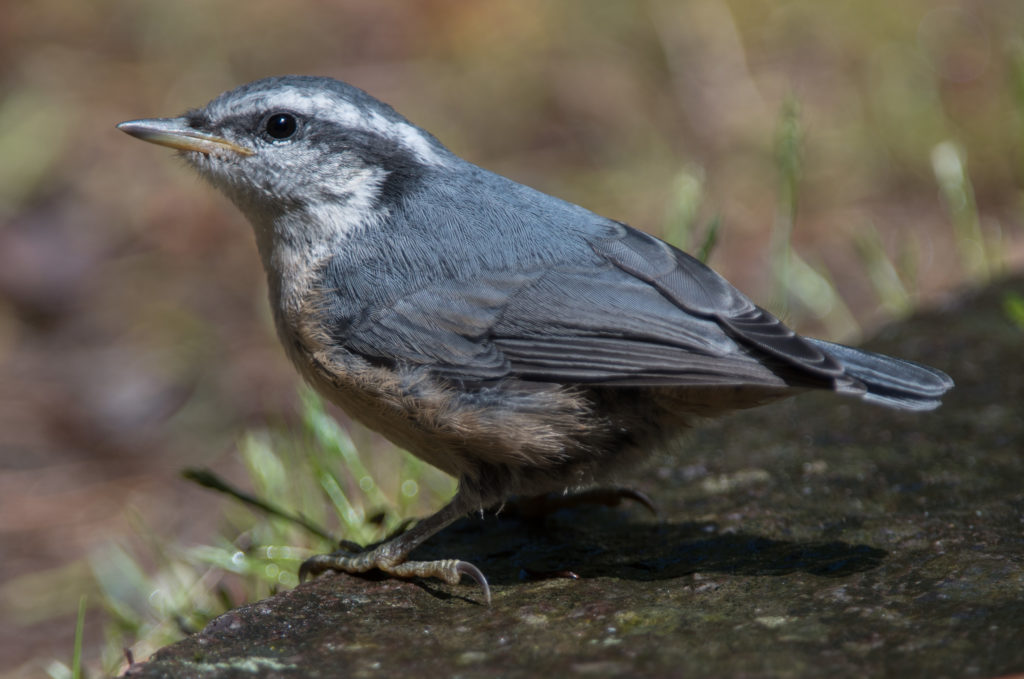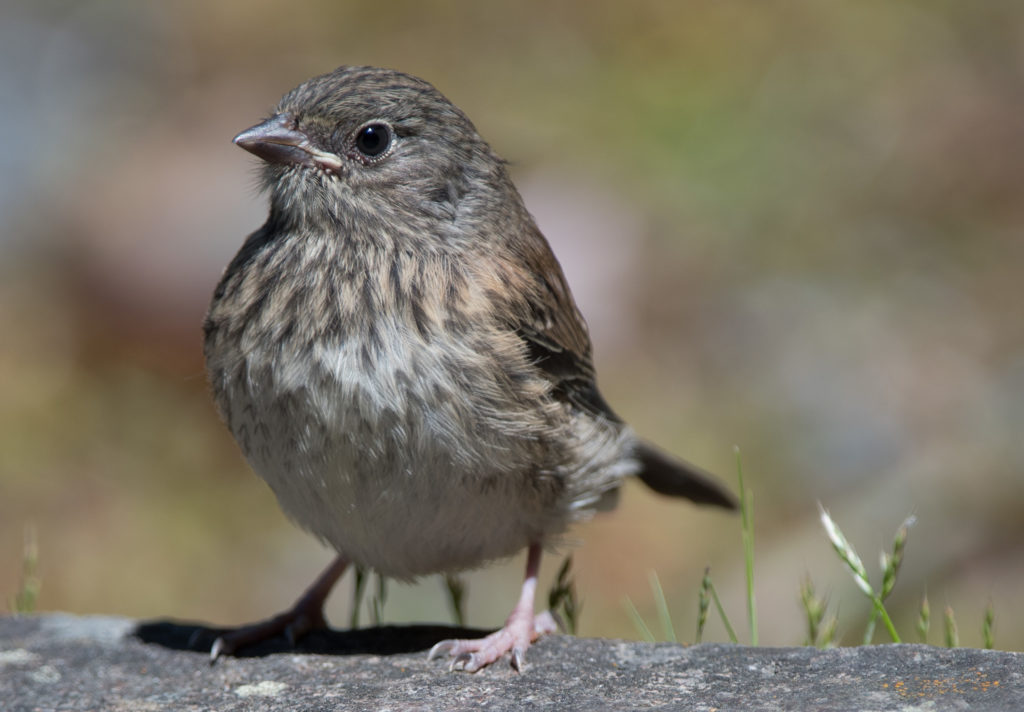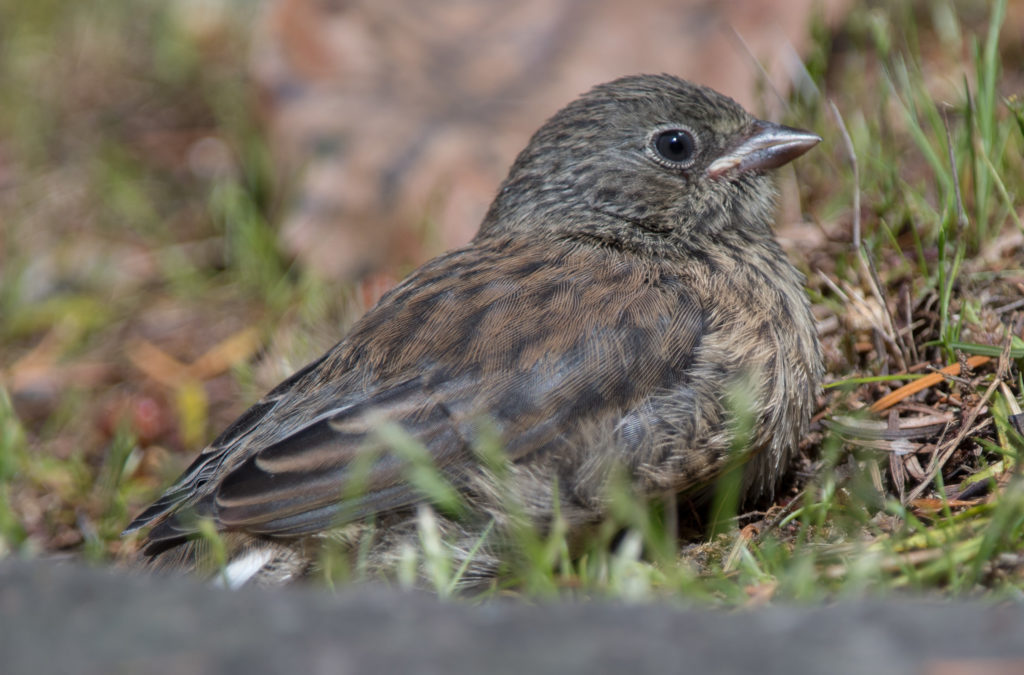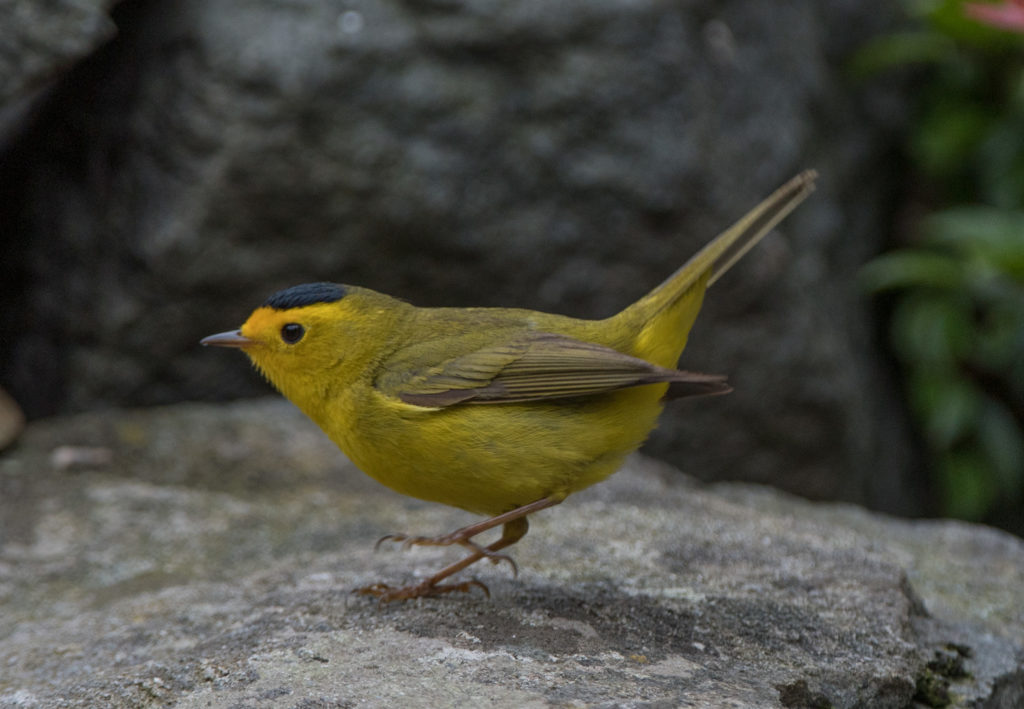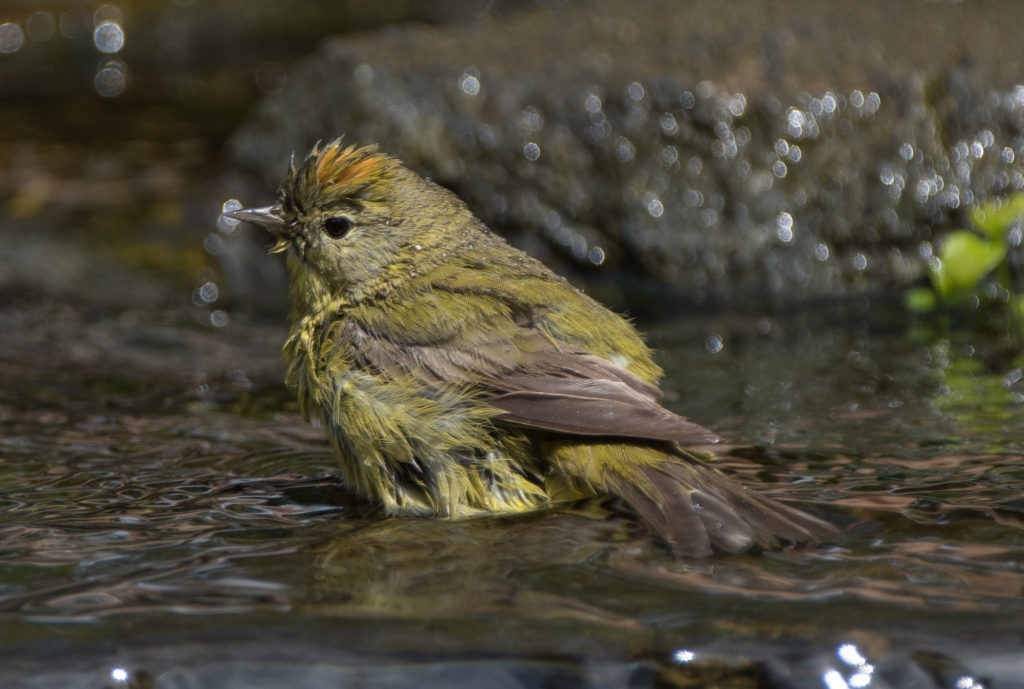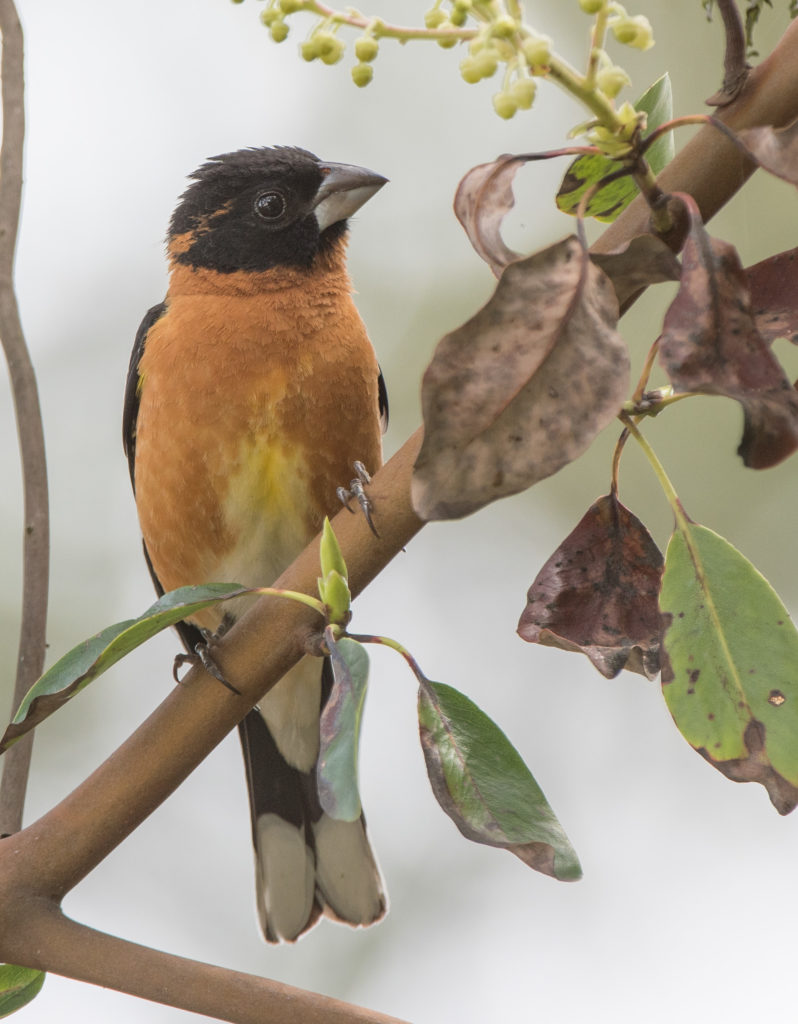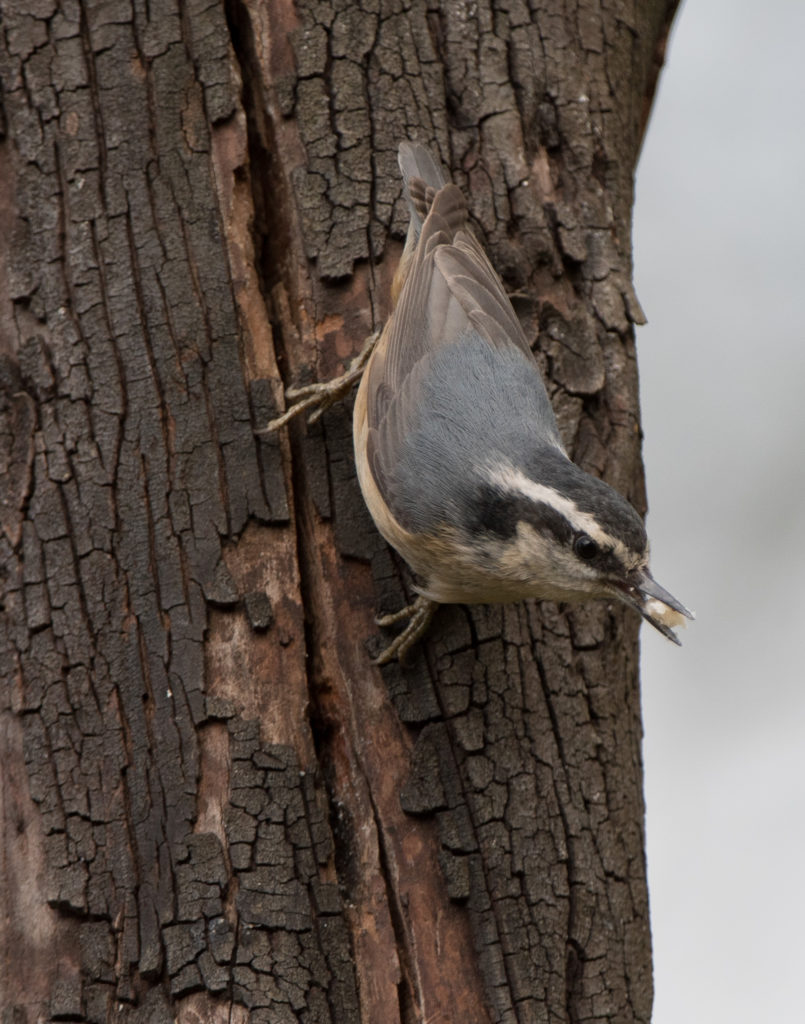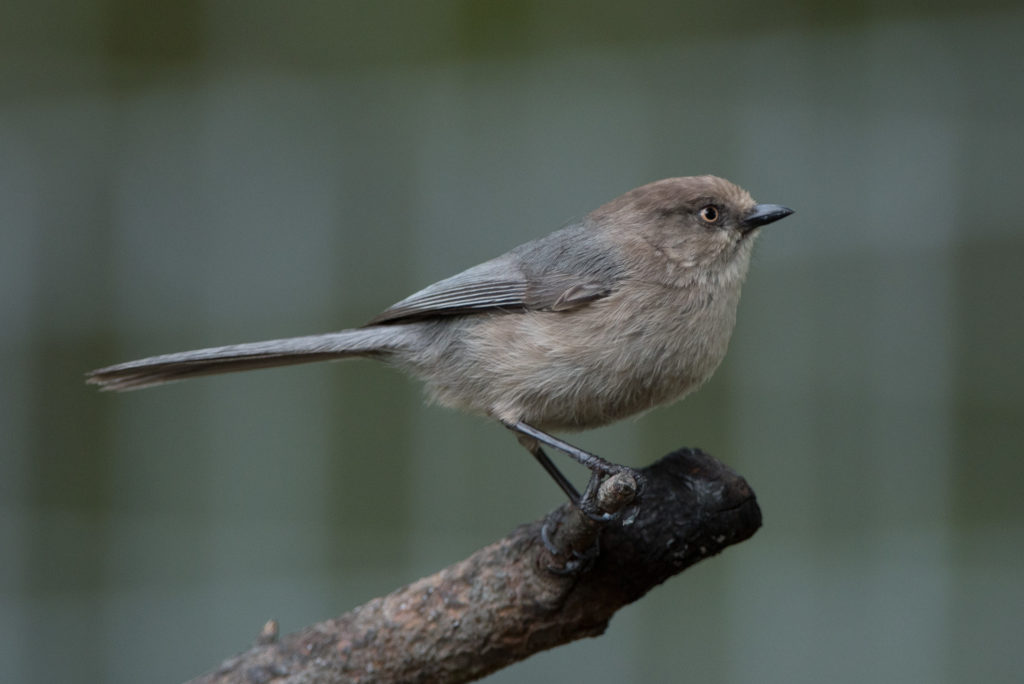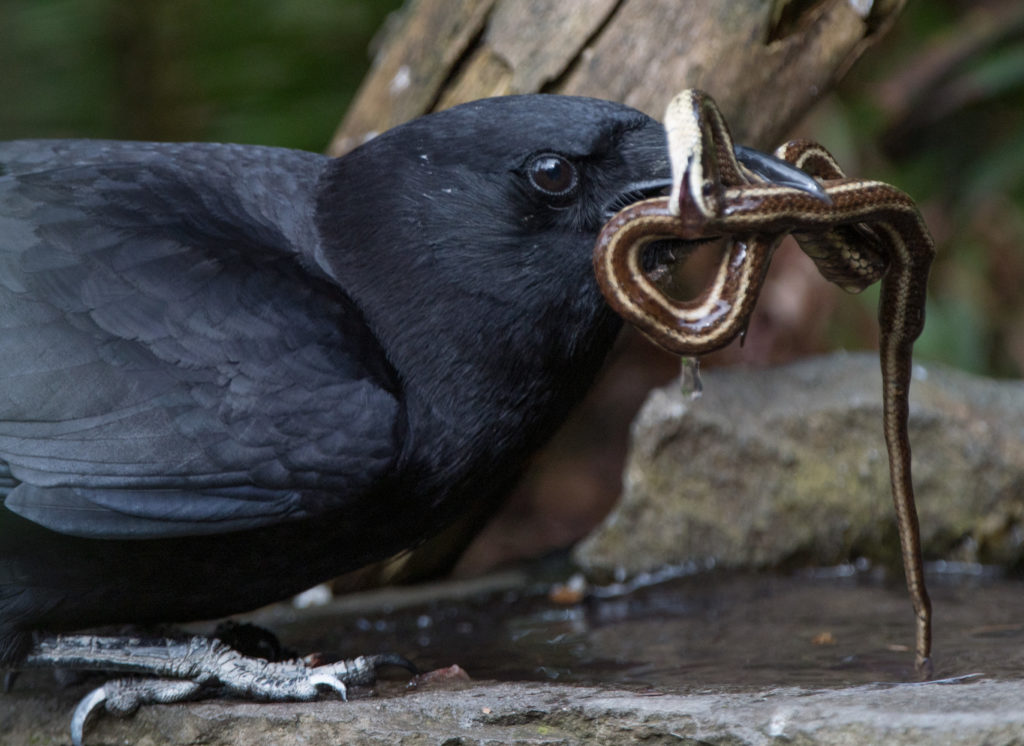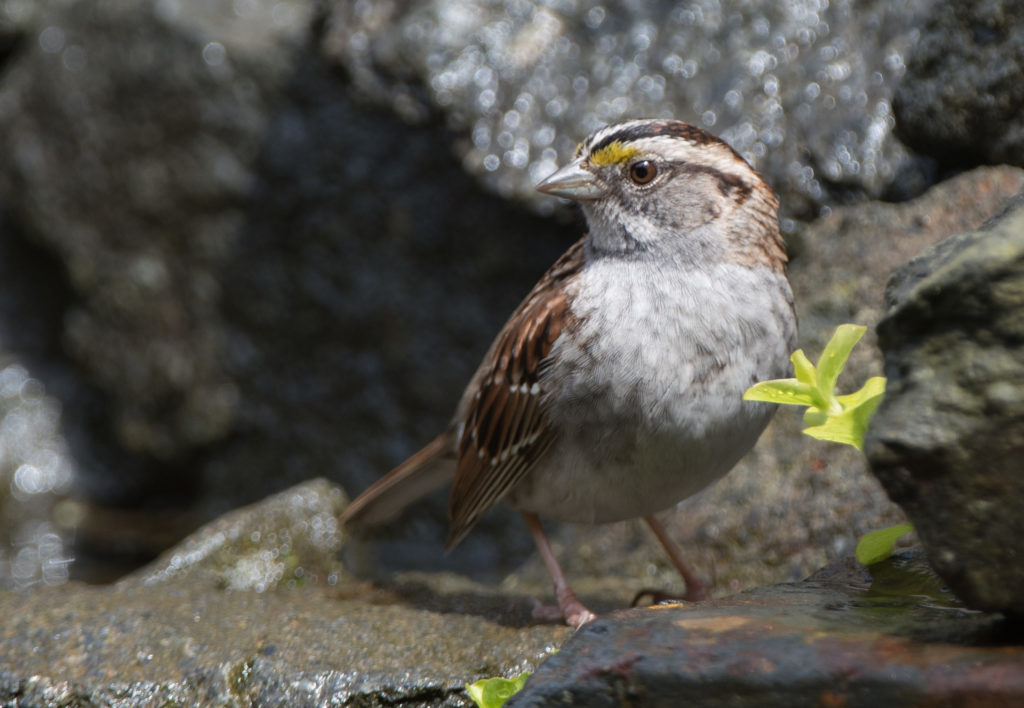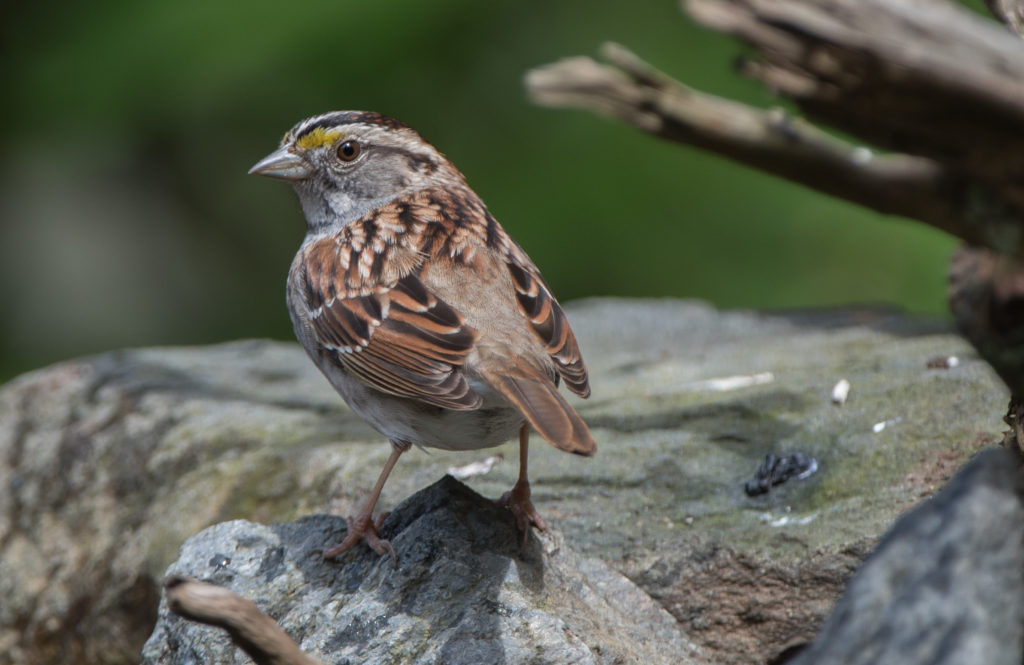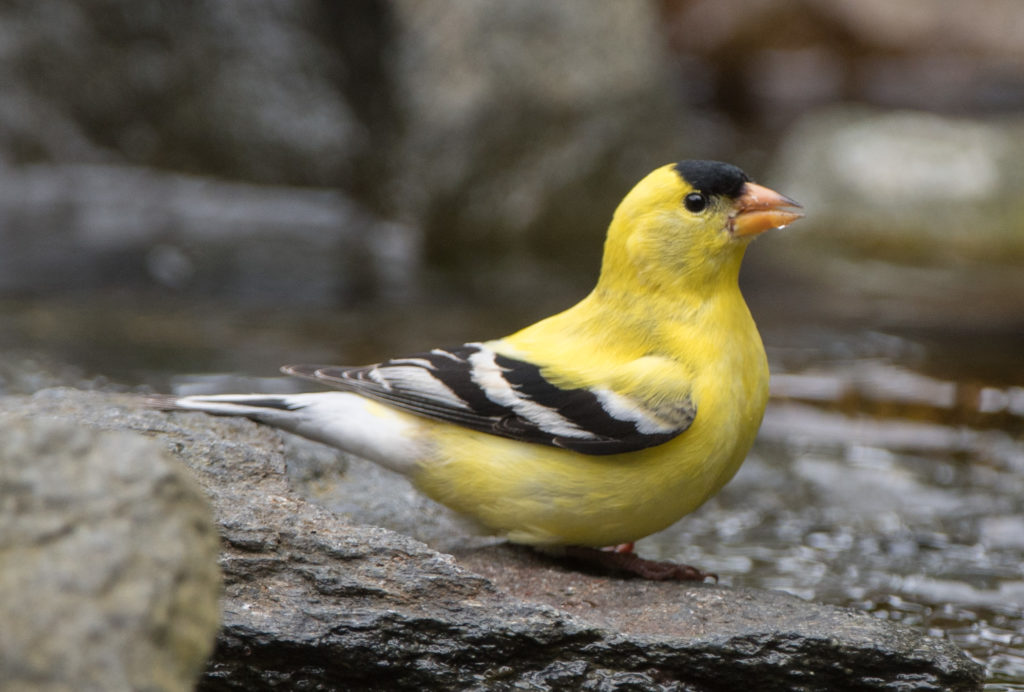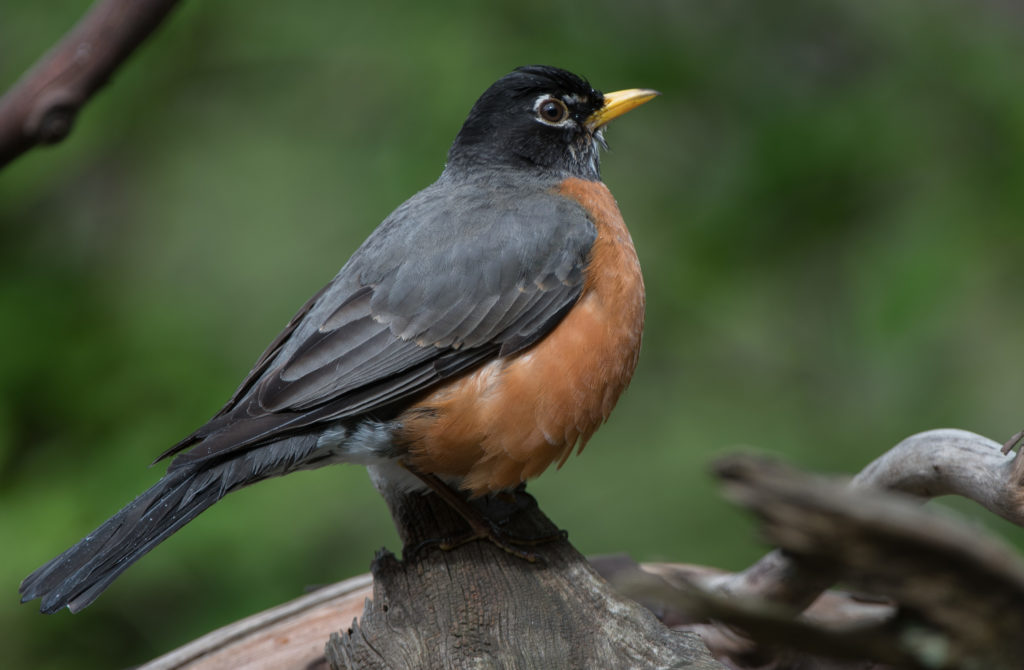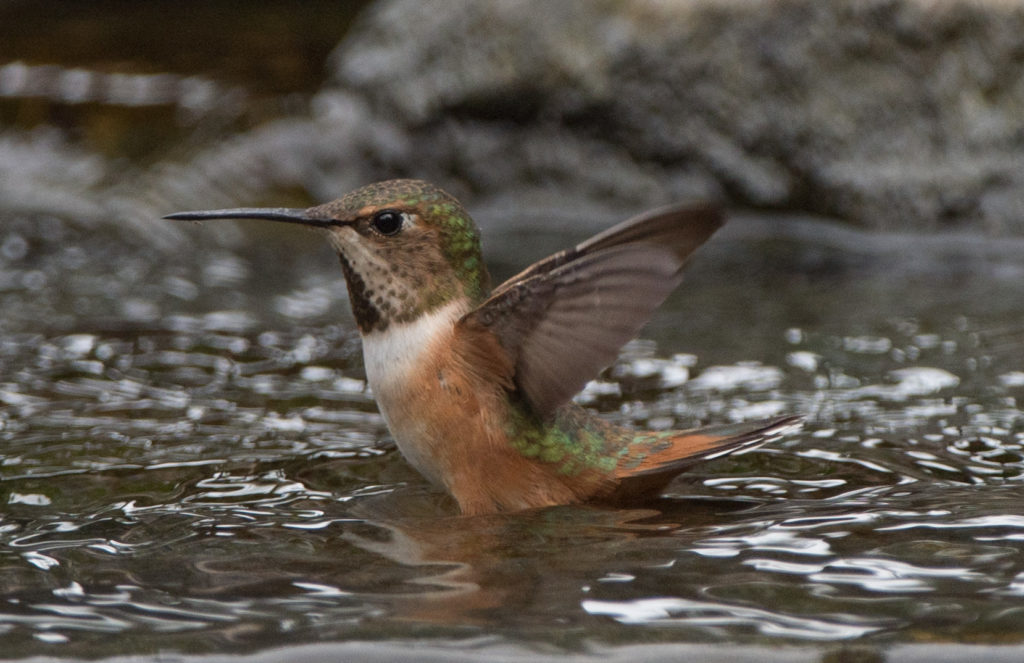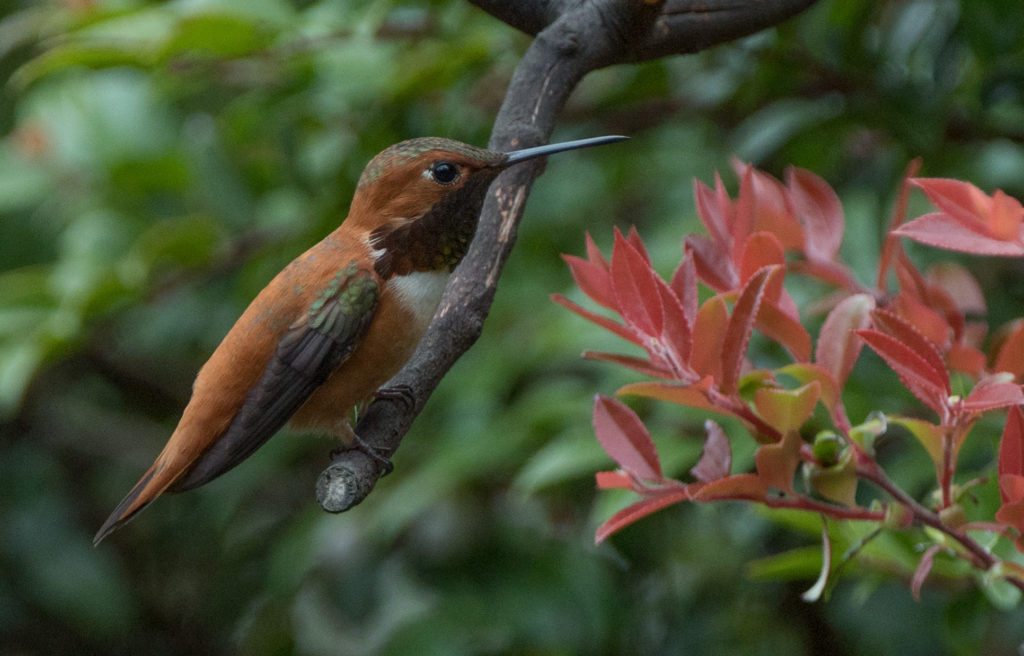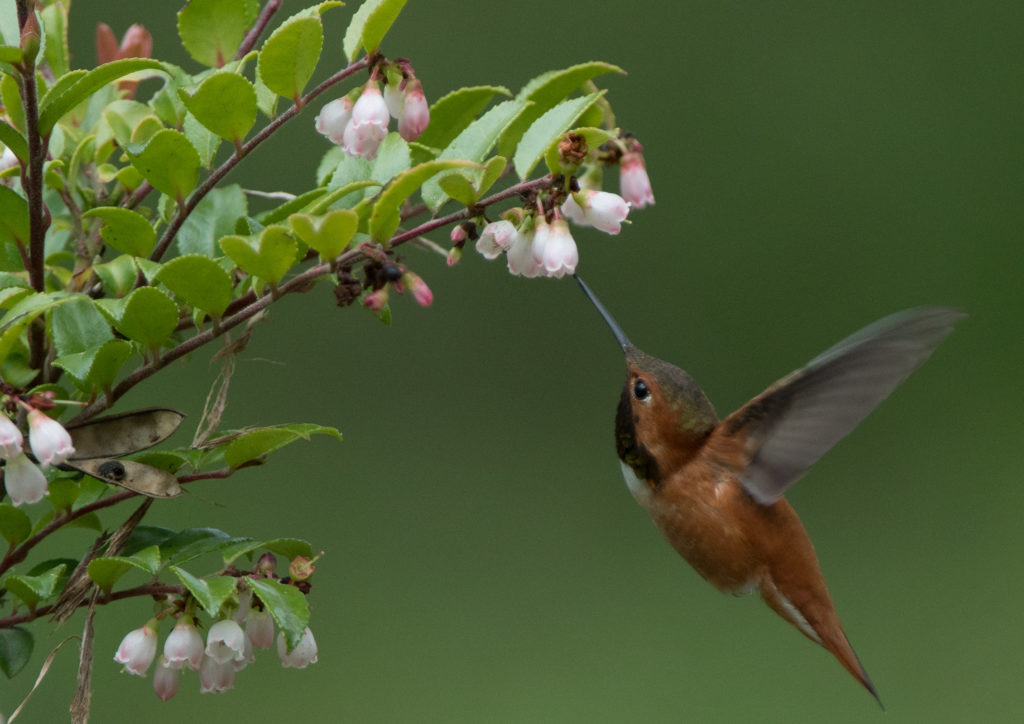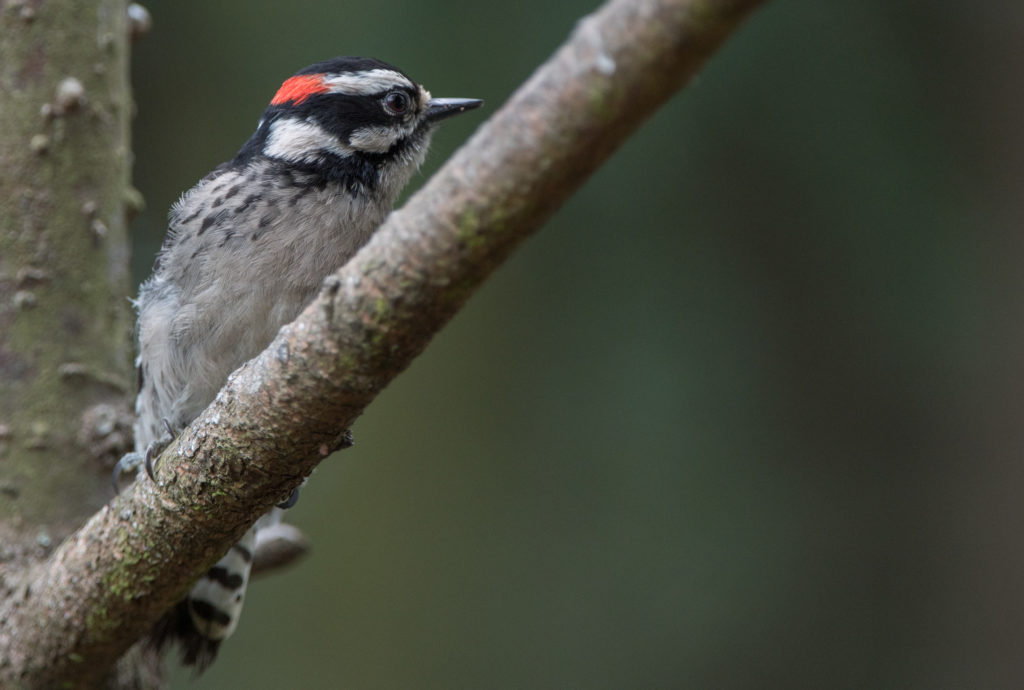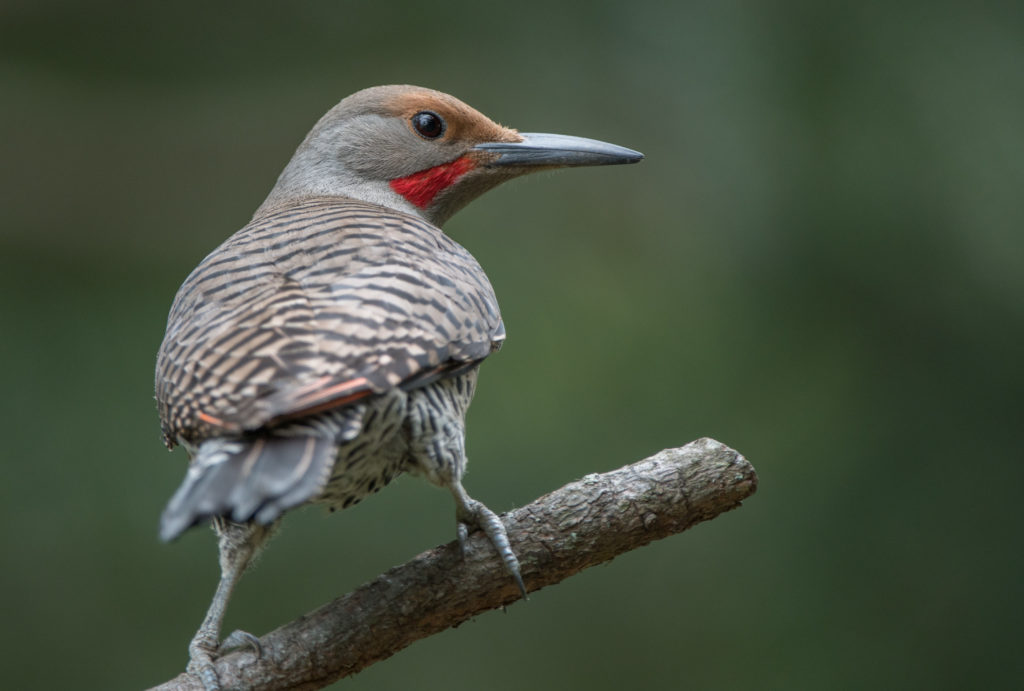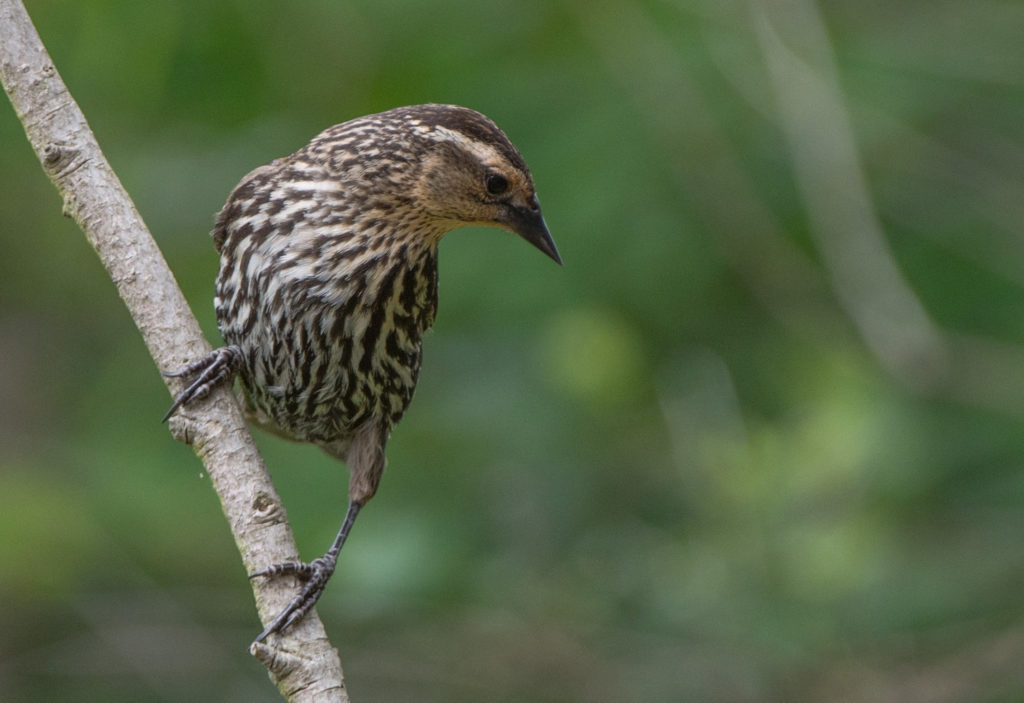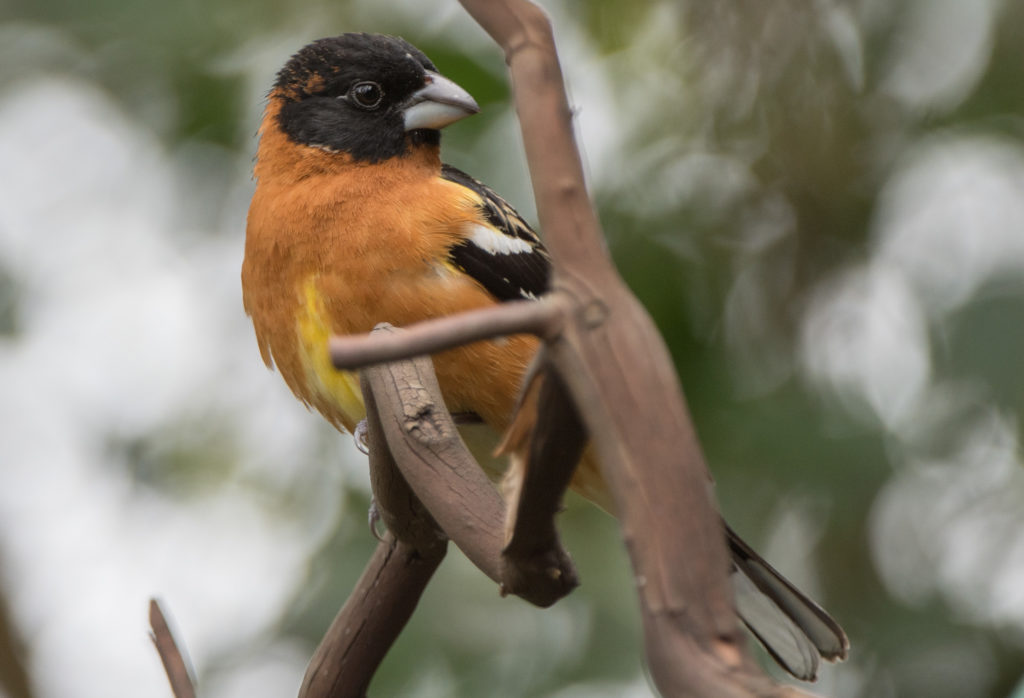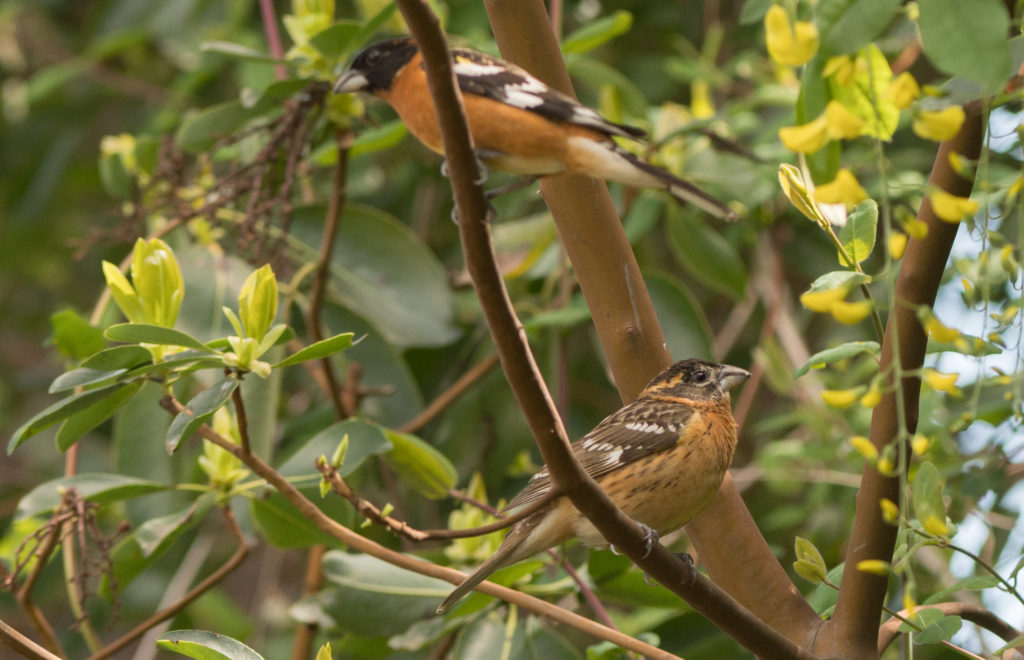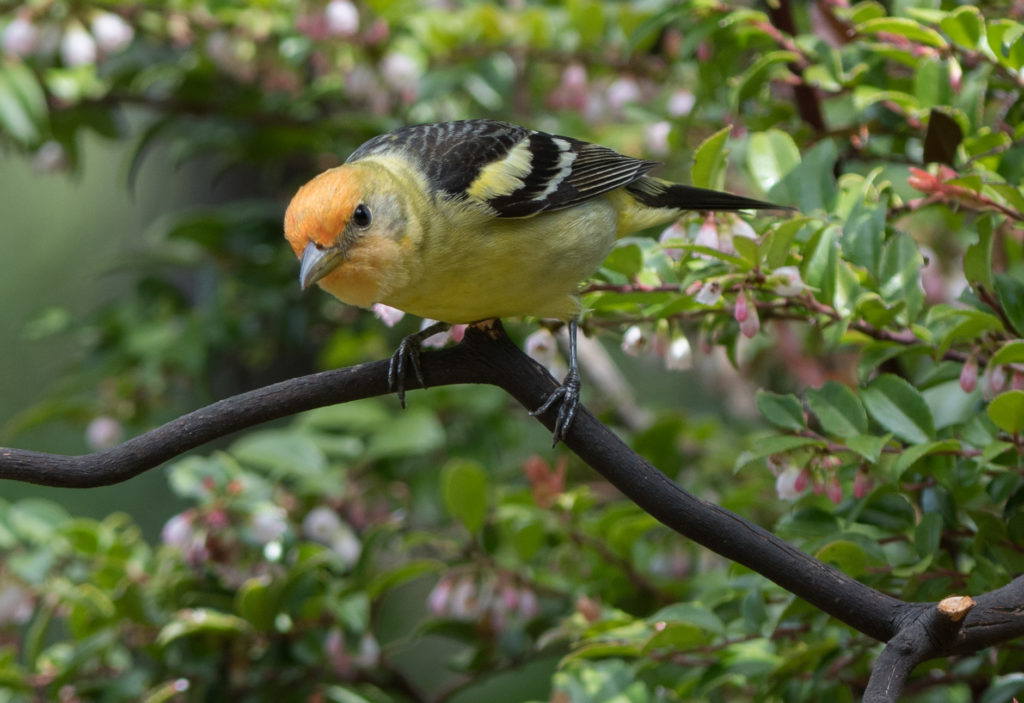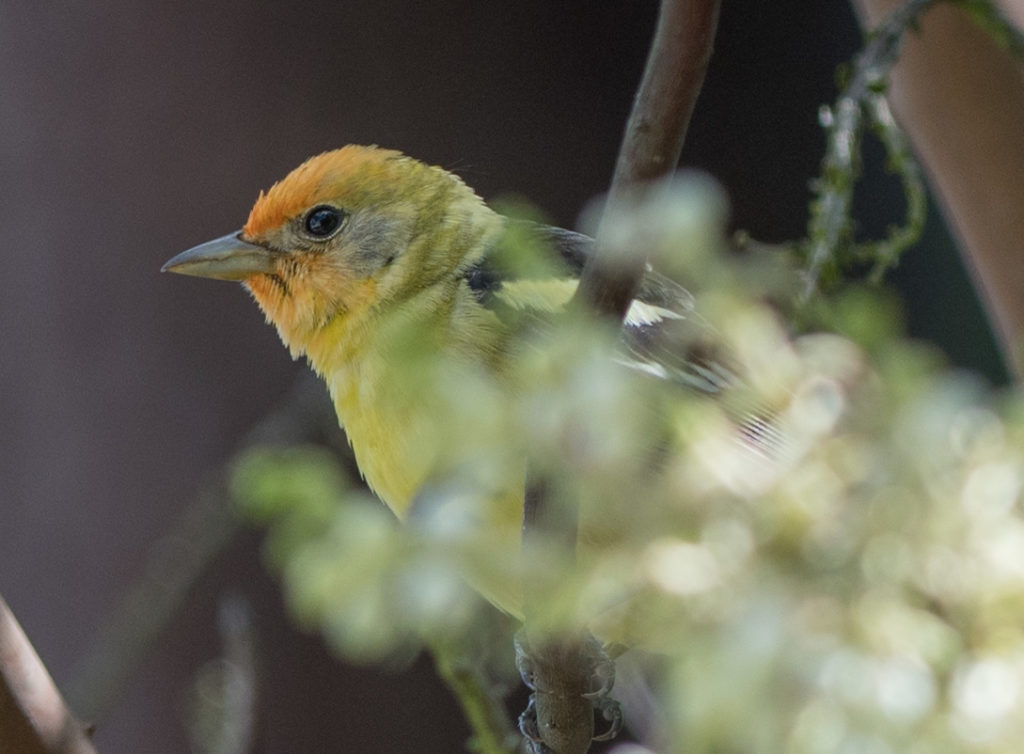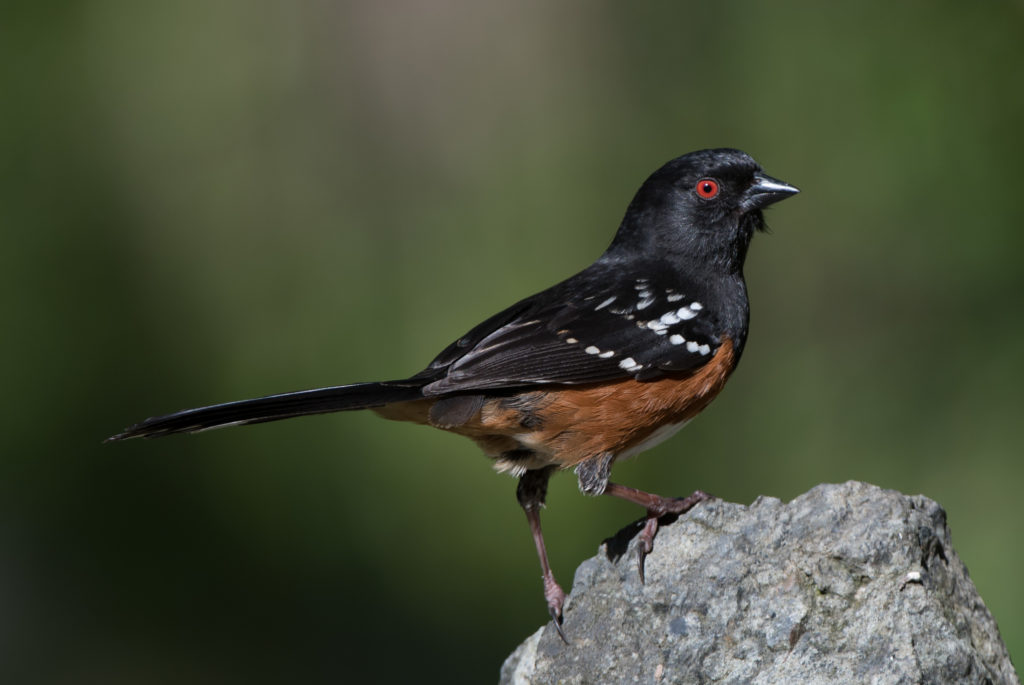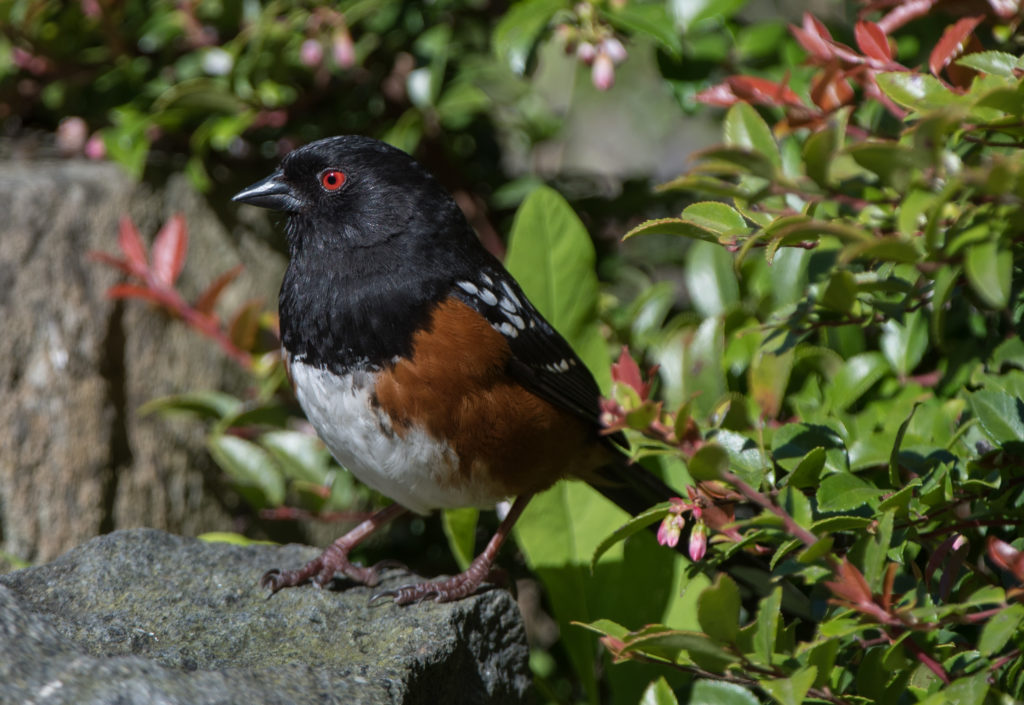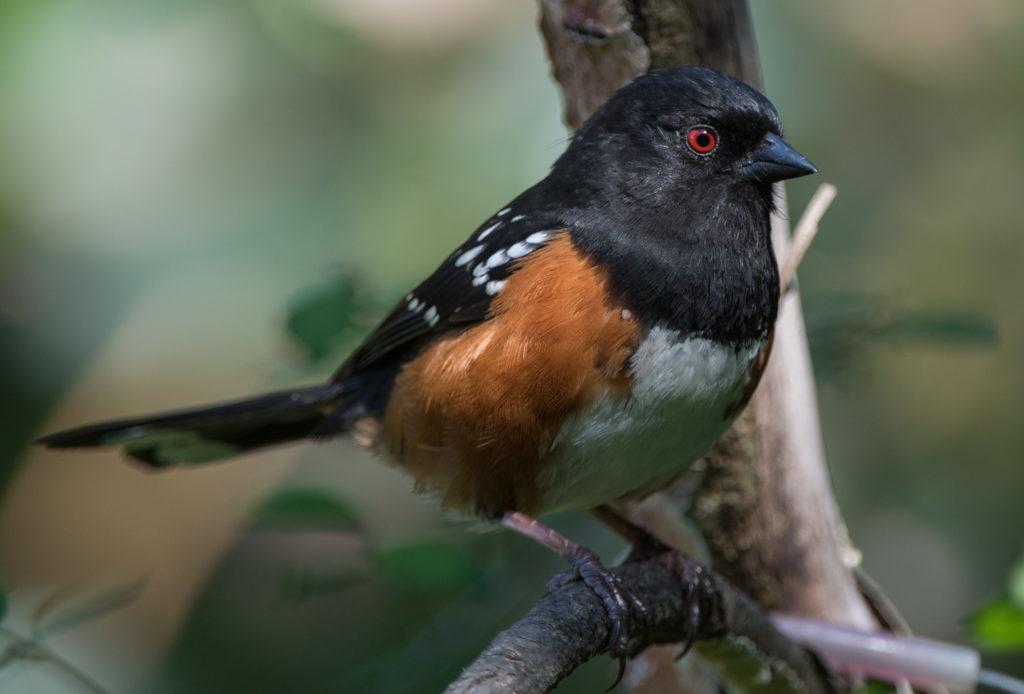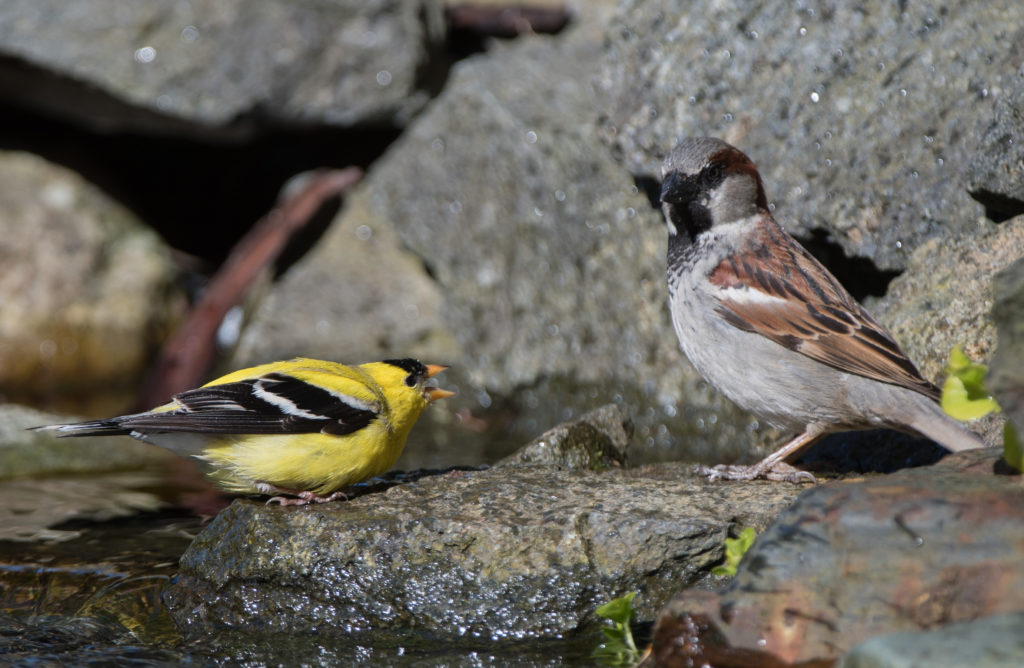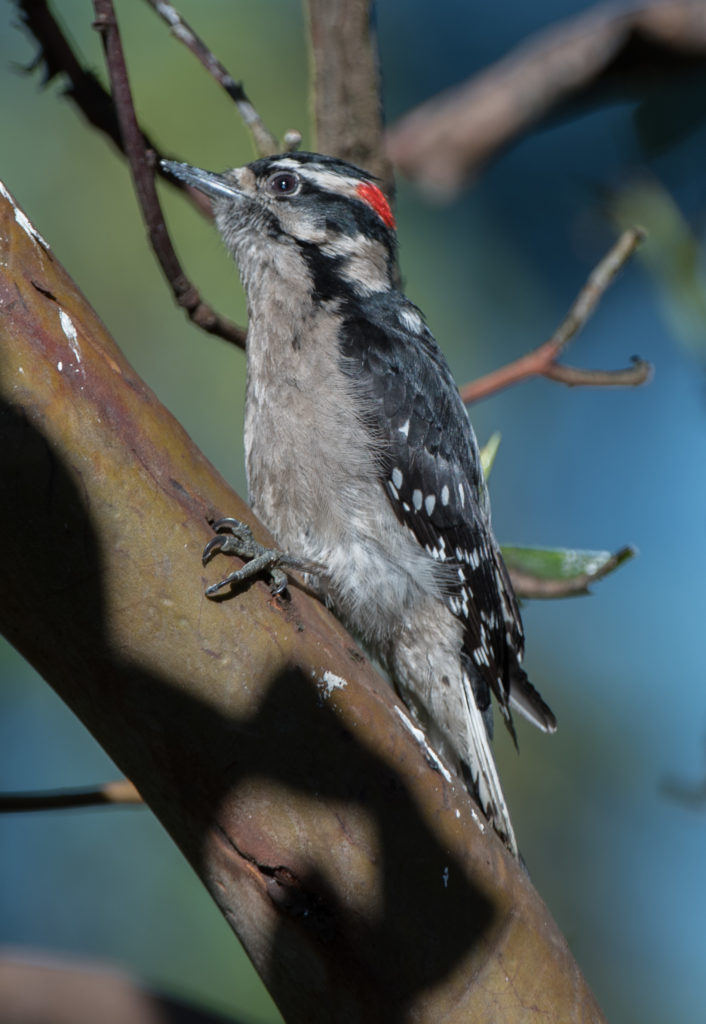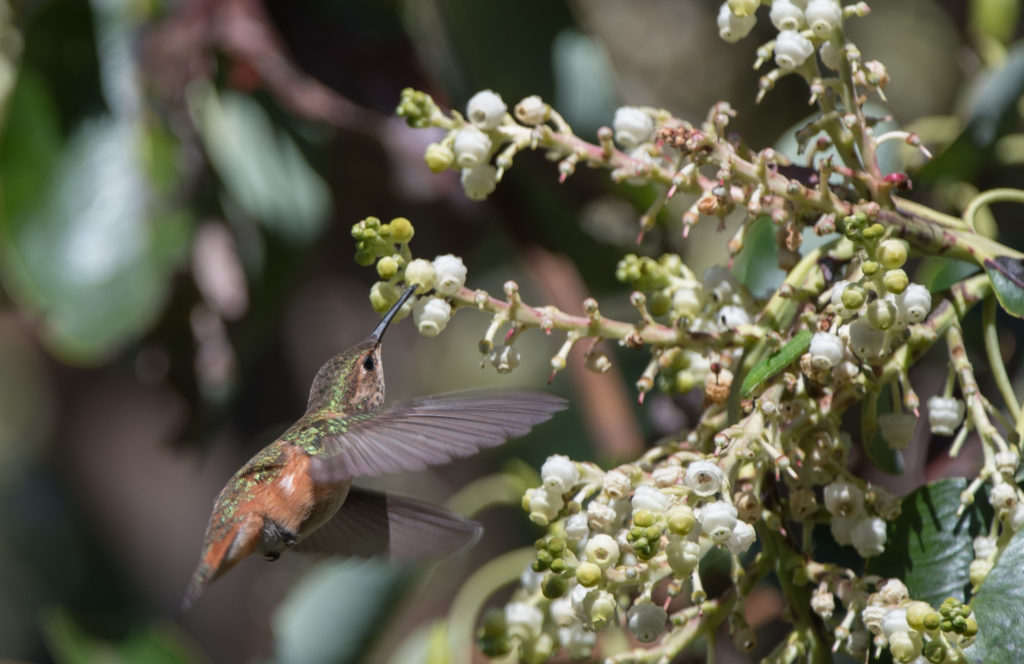We had a great influx of warblers and other migrants for the first three weeks or so of May but things dropped off rather rapidly after that. We had many sightings of Wilson’s warblers (probably our most numerous), Orange-crowned warblers and a few sightings of male Yellow-rumped warblers and two sightings on the same day of a MacGillivray’s warbler. It pains me that despite two visits I obtained no photos of the latter!
Things have settled down now so I’m going to post some of the 171 yard photos I kept from May 17, 2017. (This daily total included 50 photos of Wilson’s warblers.)
This is a male Wilson’s warbler as evidenced by the black cap.
The female Wilson’s warbler‘s cap, pictured below, is much more subtle. The challenge to birders identification of the sexes is that the birds are usually up in the trees
Here’s a photo of an Orange-crowned warbler. The orange crown is normally very difficult to see, but I get to view it by virtue of the birds taking baths and getting the tops of their heads wet from which the orange crown often emerges.
A male American goldfinch with a Pine siskin behind it. We usually have from 15-20 goldfinches in the yard at any one time.
A male Black-headed grosbeak…
We have a pair of crows hanging out in the yard, mainly bringing food in to hydrate it in one of our bird baths so that they can get moisture to their young. (My theory!)
And the star of the show on this particular day… visits by a Warbling vireo.
It’s that time of year and though the visits from some migrants have slowed to a trickle, I’ve observed the following species feeding young in the yard:
- House sparrows
- House finches
- American goldfinches
- Pine siskins
- Downy woodpeckers
- Red-breasted nuthatches
- Dark-eyed juncos (Oregon race)
- Spotted towhees
Today (5/31/2017), for the second time, I observed an Osprey flying overhead carrying nesting material in the form of a stick.

